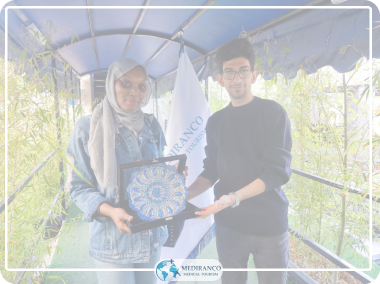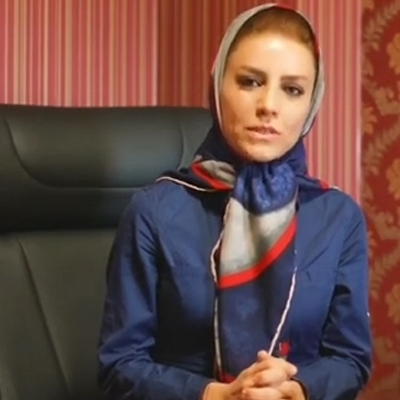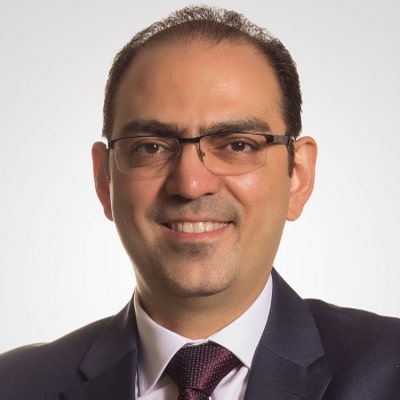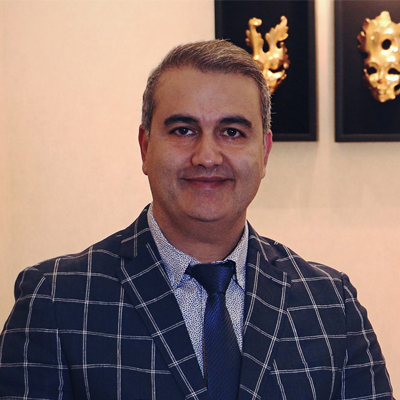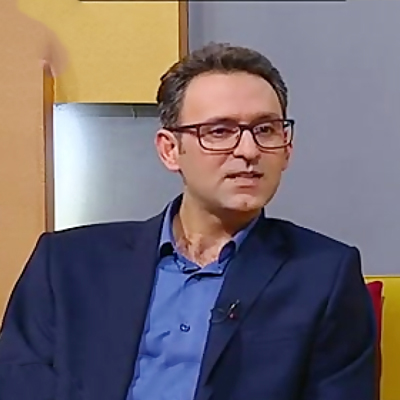Facelift in Iran
A facelift refers to a cosmetic intervention aimed at eliminating surplus skin, minimizing creases or lines, and firming the facial tissues. The procedure is not medically necessary and carries certain risks.
We help you to double your beauty! Get in touch with our consultants…
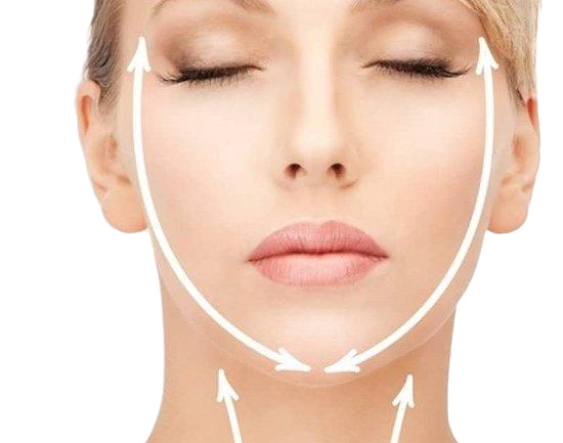

Stay in Iran
7 days
Recovery time
12-14 days
Clinic Stay
1 day
Stay in Iran
7 days
Recovery time
12-14 days
Clinic Stay
1 day
- Packeges
- Videos
- B & A Photos
- Surgeon
- Hotels
- FAQs
What is Facelift ?
A facelift refers to a cosmetic intervention aimed at eliminating surplus skin, minimizing creases or lines, and firming the facial tissues. The procedure is not medically necessary and carries certain risks. As individuals age, the skin and tissues naturally lose their elasticity, resulting in sagging and wrinkles. Rhytidectomy, or facelift surgery, is a surgical method that elevates and tightens these facial tissues. During a facelift, excess skin can be removed, folds or wrinkles can be smoothed, and facial tissue can be tightened. However, it does not encompass procedures such as brow or eye lifts, although these may be performed concurrently.
About Facelift in Iran
The overall expense of a facelift procedure comprises the surgeon’s fee, the facility fee for the surgical center, and the anesthesia fee. Since facelift procedures are cosmetic in nature, health insurance companies do not typically cover the cost. Consequently, the patient is solely responsible for the entire amount.
Facelift cost in Iran :
In Iran, the cost of a facelift typically begins at 2,000€, encompassing various expenses such as anesthesia, medications, and clinic fees. If a neck lift is desired in addition to the facelift, an extra cost ranging from 200€ to 500€ may be incurred. For the most recent pricing details on facelift procedures in Iran, please don’t hesitate to contact us
Romanian girl choosing Iran for a perfect Facelift result
Others Video
Australian girl getting a Facelift in Iran thinks it’s way better than you think
Australian girl getting a Facelift in Iran thinks it’s way better than you think
Australian girl getting a Facelift in Iran thinks it’s way better than you think
Australian girl getting a Facelift in Iran thinks it’s way better than you think
Rhinoplasty in Iran before and after
Before
after
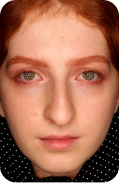

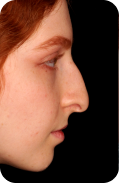

Before
after




Before
after




Before
after




What Our Customer Say
Iesna
GB
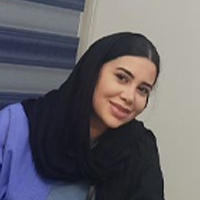
Mediranco is an excellent agency they helped me arrange my whole trip to Iran and surgery with Dr. Hooman Ganjehkhosravi. From the moment I arrived in Tehran, I was greeted with warmth and hospitality that made…
Lydia
GB

I had a guide called sara who was absolutely amazing. She was so caring and kind and made sure I was comfortable and safe throughout my trip. I really recommend any one using mediran to book with sara!
Mansoor
DK

My name is Mansoor from Denmark .I highly recommend this mediranco. Mr Hossain was very kind and Good person. The Company mediranco is very fast to response. Thanks mediranco
Amal
AU

I had an amazing experience with Mediranco’s service. Traveling to Iran on November 1st, 2023, for Gastric sleeve surgery was truly incredible. From the airport pick-up to a farewell dinner on my last day, the journey was exceptional…
Now, let’s have a look at the photos of our patients in Iran!






Dr Shahriar Yahyavi
+2000
Successful Surgeries
12
Years of Experience
Successful Surgeries
+5
Dr Mitra Manavi
+2000
Successful Surgeries
12
Years of Experience
Successful Surgeries
+5
Dr kasra sabeti
+2000
Successful Surgeries
12
Years of Experience
Successful Surgeries
+5
Dr Farzad Nikouseresht
+2000
Successful Surgeries
12
Years of Experience
Successful Surgeries
+5
Dr Asadollah Mahdavi
+2000
Successful Surgeries
12
Years of Experience
Successful Surgeries
+5
Best Facelift Surgeon Iran
How you prepare for facelift

Preparing for a facelift involves similar steps to preparing for any other surgical procedure. Prior to the surgery, your doctor will likely request presurgical evaluation to assess your overall health.
In preparation for the facelift, your doctor may advise you to:
Adjust medications: Certain medications may need to be temporarily discontinued or their dosage adjusted before the procedure. This will be determined by your doctor.
Quit smoking: It is typically recommended to stop smoking before the surgery as smoking can interfere with the healing process.
Avoid specific substances: Aspirin, anti-inflammatory pain relievers, and herbal supplements might need to be avoided to minimize the risk of bleeding and bruising.
Apply specific products: Your doctor may instruct you to apply certain products to your face prior to the procedure. These products could be part of a preoperative skincare routine to optimize the condition of your skin.
Why choose iran for facelift ?
Iran is renowned for having highly skilled plastic surgeons who are internationally recognized for their expertise. These Iranian plastic surgeons are all board-certified and have undergone comprehensive training and fellowships at prestigious medical universities and hospital colleges. Their specialization extends to various cosmetic and reconstructive plastic surgeries.
Iranian facelift surgeons have a proven history of successful surgeries, demonstrating their expertise in delivering safe and effective facelift procedures that result in a rejuvenated and more youthful appearance. They dedicate considerable time and effort to understanding each patient’s unique needs and preferences. This involves thorough pre-operative discussions and consultations, as well as attentive post-operative care. Employing an individualized approach, these surgeons strive to deliver the best possible outcomes for each patient.
Mediranco Health Tourism Company is a reputable organization in Iran that specializes in facilitating health tourism services, including plastic surgery procedures such as facelifts. They work closely with highly skilled and internationally recognized Iranian plastic surgeons who have undergone extensive training and have a proven track record of successful surgeries.
When considering why to choose Iran for a facelift, Mediranco Health Tourism Company can provide a comprehensive package that includes access to these skilled Iranian plastic surgeons. The company ensures that patients receive personalized care, starting from pre-operative discussions and consultations to post-operative follow-up care. By partnering with Mediranco, individuals seeking facelift procedures in Iran can benefit from the expertise and dedication of these experienced surgeons, resulting in safe and effective outcomes that enhance their appearance and provide a more youthful look.
Hotels

Shiraz Hotel
Tehran, crossroad of chamran and valiasr, parsian esteghlal international hotel
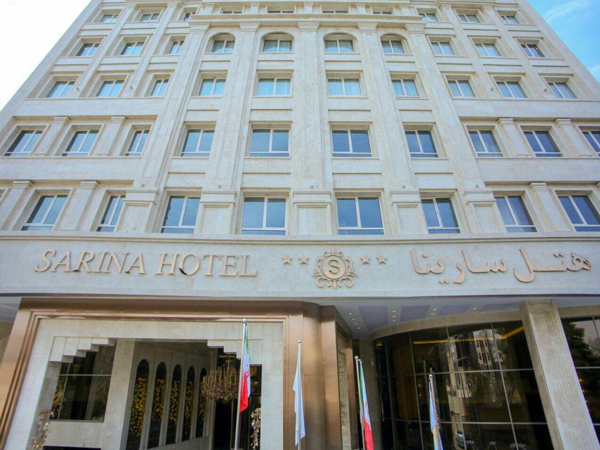
Sarina Hotel
Tehran, crossroad of chamran and valiasr, parsian esteghlal international hotel

SarayeAmeriha Boutique Hotel
Tehran, crossroad of chamran and valiasr, parsian esteghlal international hotel

Parsian Safaiyeh Hotel
Tehran, crossroad of chamran and valiasr, parsian esteghlal international hotel

Parsian Esteghlal Hotel
Tehran, crossroad of chamran and valiasr, parsian esteghlal international hotel

Parsian Azadi Hotel
Tehran, crossroad of chamran and valiasr, parsian esteghlal international hotel
How to Recover From Facelift ?
- Take time off work
Most patients take 7-10 days off work to recover from a Facelift procedure. You will likely feel some discomfort and swelling during this time, so it is important to take it easy and rest.

- Follow your surgeon’s instructions
Guidance from your plastic surgeon is key post Facelift. Adhere to their instructions meticulously for effective care. Your surgeon will provide details on cleaning the area, managing swelling and pain, and scheduling follow-up appointments. Keep your head elevated during the initial days to reduce swelling, and your surgeon might recommend a nose splint or cast for protection. Additionally, pay attention to your diet—following your surgeon’s advice on nutrition and fluid intake contributes to a smooth recovery. Trust the process and ensure the best outcomes by following your surgeon’s personalized care plan.

- Avoid strenuous activities:
You should avoid strenuous activities such as exercise, heavy lifting, and bending over for at least two weeks after the procedure. This will help to minimize swelling and prevent any damage to the delicate tissues in your nose.

- Take your medications as directed
If prescribed pain medication, take it as directed to alleviate any post-procedure discomfort. Also, to ensure the best results and prevent infections, diligently take the prescribed antibiotics. Timely and consistent medication intake is crucial, so stay on schedule and trust your surgeon’s advice for a smooth and successful recovery.

- Use cold compresses
Applying cold compresses to your nose can help to reduce swelling and discomfort. Be sure to follow your surgeon’s instructions on how often to use cold compresses and how long to apply them for.

- Attend follow-up appointments
Applying cold compresses to your nose can help to reduce swelling and discomfort. Be sure to follow your surgeon’s instructions on how often to use cold compresses and how long to apply them for.

- Avoid alcohol and smoking
Applying cold compresses to your nose can help to reduce swelling and discomfort. Be sure to follow your surgeon’s instructions on how often to use cold compresses and how long to apply them for.

A properly performed facelift can have a life-changing impact. There are numerous doctors who offer facelift procedures, but only a select few possess the combination of artistic skill and scientific expertise needed to achieve truly excellent results. If you’re seriously considering facelift surgery, it’s natural to have questions and concerns about what to expect. While cosmetic surgery, especially on the face, can evoke nervousness, it is important to note that it is typically a safe procedure with rare serious complications.
During a consultation for facelift surgery in Iran, the doctor will provide a detailed explanation of the procedure and conduct a thorough assessment to determine if you are a suitable candidate.
There are various options for modern facelift procedures. The choice of procedure depends on the desired outcomes. Often, facelift surgery is combined with neck lift surgery, liposuction, and fat injections to achieve optimal results.
What are the steps of a facelift procedure ?
Facelift surgery comprises several steps, and here is an explanation of each one:
Anesthesia: Your surgeon will administer either general anesthesia (putting you to sleep) or IV sedation to ensure your comfort during the procedure. The choice of anesthesia will be determined by your surgeon based on your specific needs.
The incision: Depending on the type of facelift you opt for, your surgeon will make incisions in various areas, such as:
- Along your hairline.
- Around your ears.
- Along the lower scalp.
- Under your chin.
- Inside your mouth.
The size and location of the incisions will vary depending on the specific facelift technique chosen. Your surgeon will discuss these details with you prior to the surgery.
The procedure: Facelift procedures commonly entail the repositioning and removal of excess facial skin and fat, alongside the tightening of facial muscles to achieve desired facial rejuvenation. The exact actions performed will depend on the type of facelift you and your surgeon decide upon. Your surgeon will provide a thorough explanation of the procedure and its specific steps before your surgery.
Closing the incisions: Following the facelift procedure, your surgeon will close the incisions.


What you can expect from facelift in Iran
A properly performed facelift can have a life-changing impact. There are numerous doctors who offer facelift procedures, but only a select few possess the combination of artistic skill and scientific expertise needed to achieve truly excellent results. If you’re seriously considering facelift surgery, it’s natural to have questions and concerns about what to expect. While cosmetic surgery, especially on the face, can evoke nervousness, it is important to note that it is typically a safe procedure with rare serious complications.
During a consultation for facelift surgery in Iran, the doctor will provide a detailed explanation of the procedure and conduct a thorough assessment to determine if you are a suitable candidate.
There are various options for modern facelift procedures. The choice of procedure depends on the desired outcomes. Often, facelift surgery is combined with neck lift surgery, liposuction, and fat injections to achieve optimal results.
There are different types of facelift, but the common are as the following:
Jawline Rejuvenation:
Jawline rejuvenation is a surgical procedure suitable for enhancing the appearance of the jawline and neck area. It involves the use of liposuction to remove excess fat, allowing for the sculpting of the jawline. The extracted fat can also be utilized for facial volume enhancement through injection. This procedure is particularly suitable for individuals with good skin elasticity, as no skin removal is involved.
Mini Facelift:
A mini facelift is a variation of the traditional facelift performed on a smaller scale. It involves smaller incisions that are concealed within the hairline. The surgeon tightens the skin and removes excess fat to improve the appearance of the neck and jowls. This procedure is ideal for individuals who have minimal signs of aging but are not ready for a full facelift.


Mid Facelift:
A mid-facelift targets the cheek area specifically. Small incisions are made above the ears in the hairline and inside the mouth. The fat pads in the cheeks are repositioned over the cheekbones, and the skin is tightened, resulting in a more aesthetically pleasing outcome.
S-Lift:
The S-lift focuses on the lower third of the face, including the neck and jowls. The procedure involves making an S-shaped incision in the skin, allowing the underlying tissues to be separated. The skin is then lifted, enabling the surgeon to tighten the muscles and tissues before closing the incision with sutures.
Traditional Facelift:
The traditional facelift is suitable for individuals seeking significant improvement in signs of aging. Incisions are made along the hairline, around the ears, and below the chin. The skin is carefully dissected to tighten the relevant areas of the face and neck. This results in a smoother appearance and a more defined neckline. Excess fat is removed from the neck and jowl area, and the skin is repositioned and trimmed.
Last Words about facelift in Iran
A facelift is a surgical cosmetic procedure specifically developed to target and mitigate signs of facial aging. It entails the removal of surplus skin, smoothing out wrinkles and folds, and tightening the underlying facial tissues.
It is crucial to note that a facelift is not medically necessary and carries certain risks. Therefore, it is important to be well-prepared and informed about the procedure and the recovery process.
If you are considering a facelift, it is recommended to consult with a plastic surgeon who is board certified. They can provide you with detailed information about the procedure, assess your suitability for the surgery, and help you explore your options.
Cost of Facelift in Iran
When considering a facelift, it’s important to understand the costs involved. The overall cost of a facelift includes the surgeon’s fee, anesthesia, and facility fees. In Iran, facelift procedures start from around €2,000, which is a fraction of what it might cost in other countriesm including your home country! If you wish to combine the facelift with a neck lift, additional costs ranging from €200 to €500 may apply. For an accurate quote and up-to-date pricing details, don’t hesitate to get in touch with us via WhatsApp or visit our website for more information.
Final Words
A facelift is a powerful solution for those looking to turn back the clock and rejuvenate their appearance. When you choose to undergo this procedure in Iran, you benefit from the expertise of some of the world’s best plastic surgeons, all at a fraction of the cost you’d pay elsewhere.
With cutting-edge facilities, affordable pricing, and comprehensive post-surgery care, Iran is an ideal destination for your facelift.
Ready to take the next step? Contact us today through WhatsApp or visit our website to schedule your consultation. We look forward to helping you achieve a more youthful and vibrant look!
How much is a facelift in Iran?
The cost of a facelift in Iran can vary depending on several factors such as the specific procedure, the surgeon, and the location, but it generally ranges from $2,000 to $4,000.
Why is Iran an ideal country to go for a facelift?
Iran is often considered an ideal country for a facelift due to its highly skilled plastic surgeons, affordable medical costs, and the country’s reputation for medical tourism, offering a combination of quality healthcare and competitive prices.
What are the types of facelift procedure?
The types of facelift procedures include traditional facelift, mini facelift, mid facelift, S-lift, thread lift, and non-surgical facelift options.
what is the best age for facelift?
The best age for a facelift varies depending on individual factors, but it is typically considered for individuals in their 40s to 60s who are experiencing signs of aging such as sagging skin and wrinkles.
What is the average age a woman gets a facelift?
The average age at which a woman gets a facelift is typically around 50 to 60 years old, although individual preferences and factors may vary.
Should a 70-year-old get a facelift?
The decision for a 70-year-old to undergo a facelift should be made in consultation with a qualified plastic surgeon, considering factors such as overall health, skin condition, and individual goals, as older individuals can still benefit from a facelift if they are in good health and have realistic expectations.
Is it better to get a facelift when you're younger?
The optimal timing for a facelift varies for each individual, and it is a personal decision based on factors such as individual aging process, personal preferences, and consultation with a qualified plastic surgeon.
How long does lower facelift last?
The longevity of a lower facelift varies depending on individual factors such as genetics, lifestyle choices, and the quality of skin maintenance, but generally, the results of a lower facelift can last between 5 to 10 years.
Can you see facelift scars?
To minimize their visibility, facelift scars are usually strategically placed within inconspicuous areas like the hairline or along natural skin creases, ensuring they remain well-hidden. Skilled plastic surgeons take great care to ensure that facelift scars are as discreet as possible, but individual healing and scar characteristics can vary.
Do facelift scars go away?
Facelift scars do not disappear entirely, but with time, proper care, and skilled surgical techniques, they can become less noticeable and fade.
Where are the scars for a facelift?
The scars for a facelift are typically located within the hairline, around the ears, and sometimes extend into the natural creases around the earlobe and behind the ear, aiming to keep them as inconspicuous as possible.
What is the hidden incision for a facelift?
The hidden incision for a facelift refers to an incision that is strategically placed within the hairline or along natural skin creases, such as in front of the ear, around the earlobe, or behind the ear, to minimize its visibility and make it less noticeable after the healing process.
when can you color your hair after facelift?
It is generally advised to wait for at least two weeks after a facelift before coloring your hair to ensure proper healing of the incisions and minimize the risk of complications.
when can you wash your hair after facelift?
The timing for washing your hair after a facelift can vary depending on the specific instructions provided by your surgeon, but typically you can begin washing your hair a few days after the procedure, following the post-operative guidelines provided to you.
Is my hair saved in facelift?
During a facelift procedure, the hair is not directly affected or removed. The incisions are typically made around the hairline or within natural creases, and the hair is carefully preserved and not typically affected by the surgery.
how long does facelift surgery take?
The duration of a facelift surgery can vary depending on the specific techniques used, the extent of the procedure, and the individual patient, but on average, it typically takes around 3 to 5 hours to perform a facelift surgery.
How painful is a facelift?
Pain experiences can vary among individuals, but it is common to experience some discomfort, tightness, and mild pain after a facelift surgery, which can be managed with prescribed pain medications and proper post-operative care.
How long after facelift will I look normal?
Visible bruising and swelling typically subside within a few weeks to a month after a facelift, but it may take several months to see the full results and feel completely back to a normal appearance.
How long are you in bed after a facelift?
The amount of time spent in bed after a facelift can vary, but typically patients are advised to rest and limit physical activity for the first few days to a week after the surgery, gradually increasing activity levels as recommended by their surgeon.
Why choose Iran for facelift?
Iran is often chosen for facelift procedures due to several factors, including highly skilled plastic surgeons, affordable medical costs, advanced healthcare infrastructure, a reputation for quality cosmetic procedures, and the opportunity to combine the surgery with medical tourism and cultural experiences.

